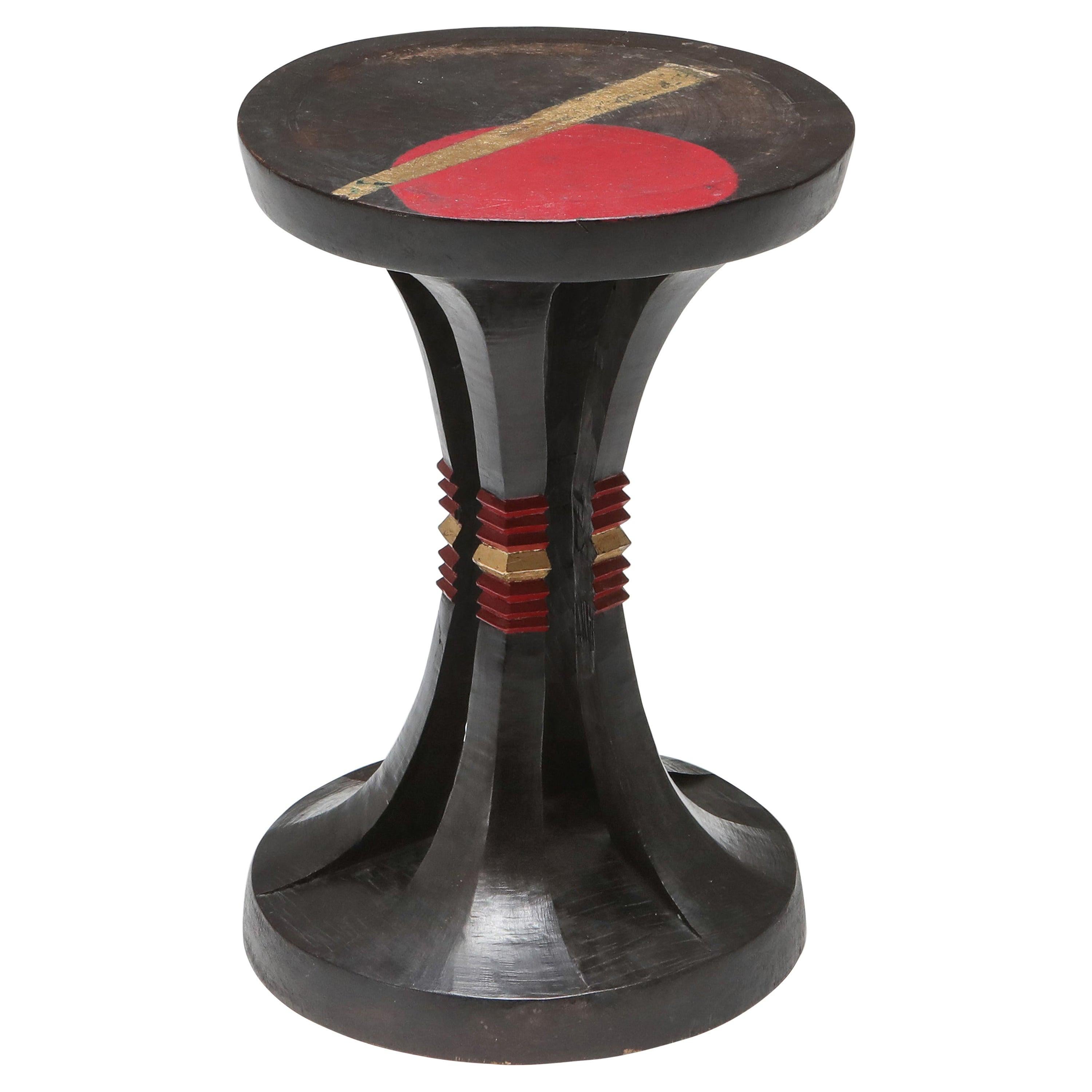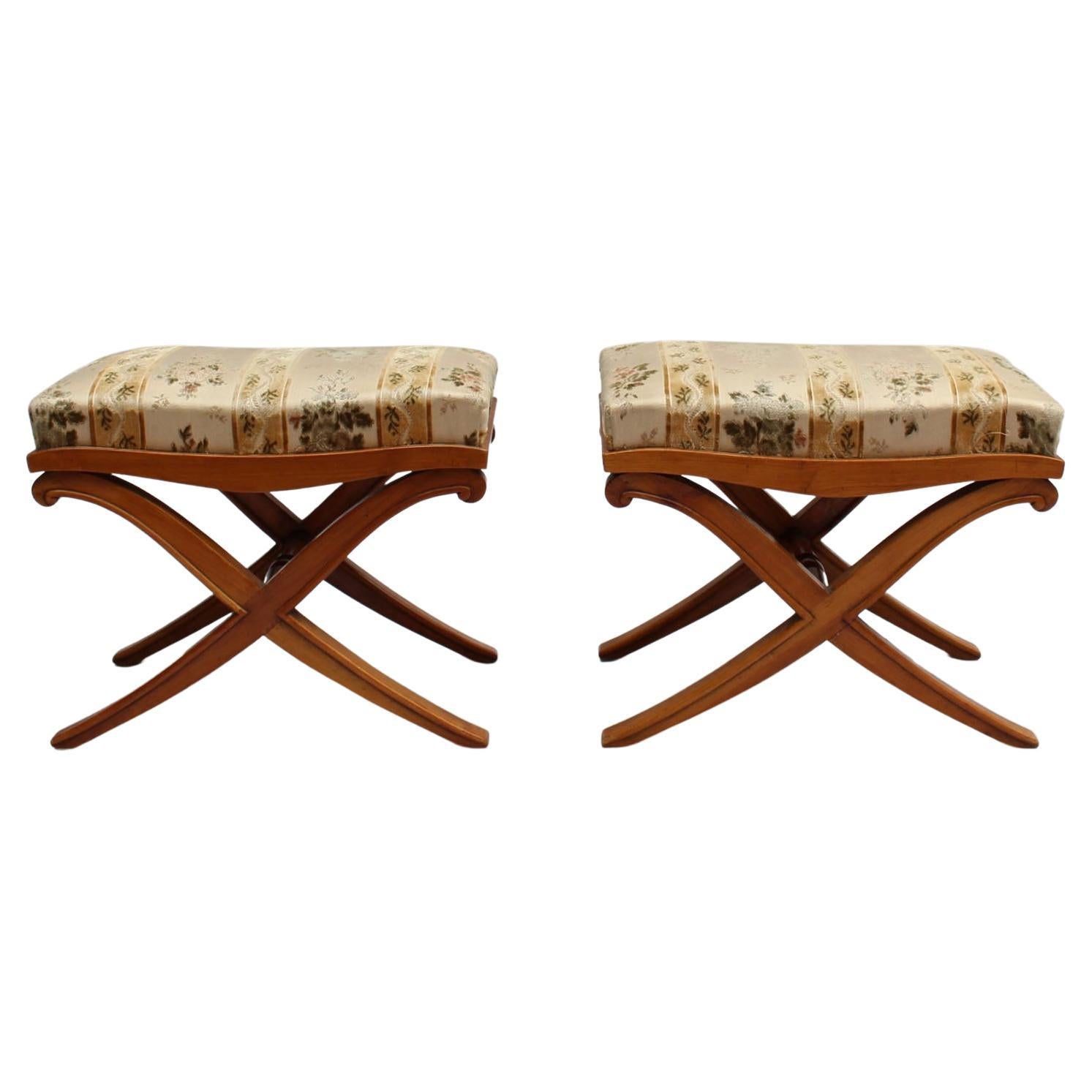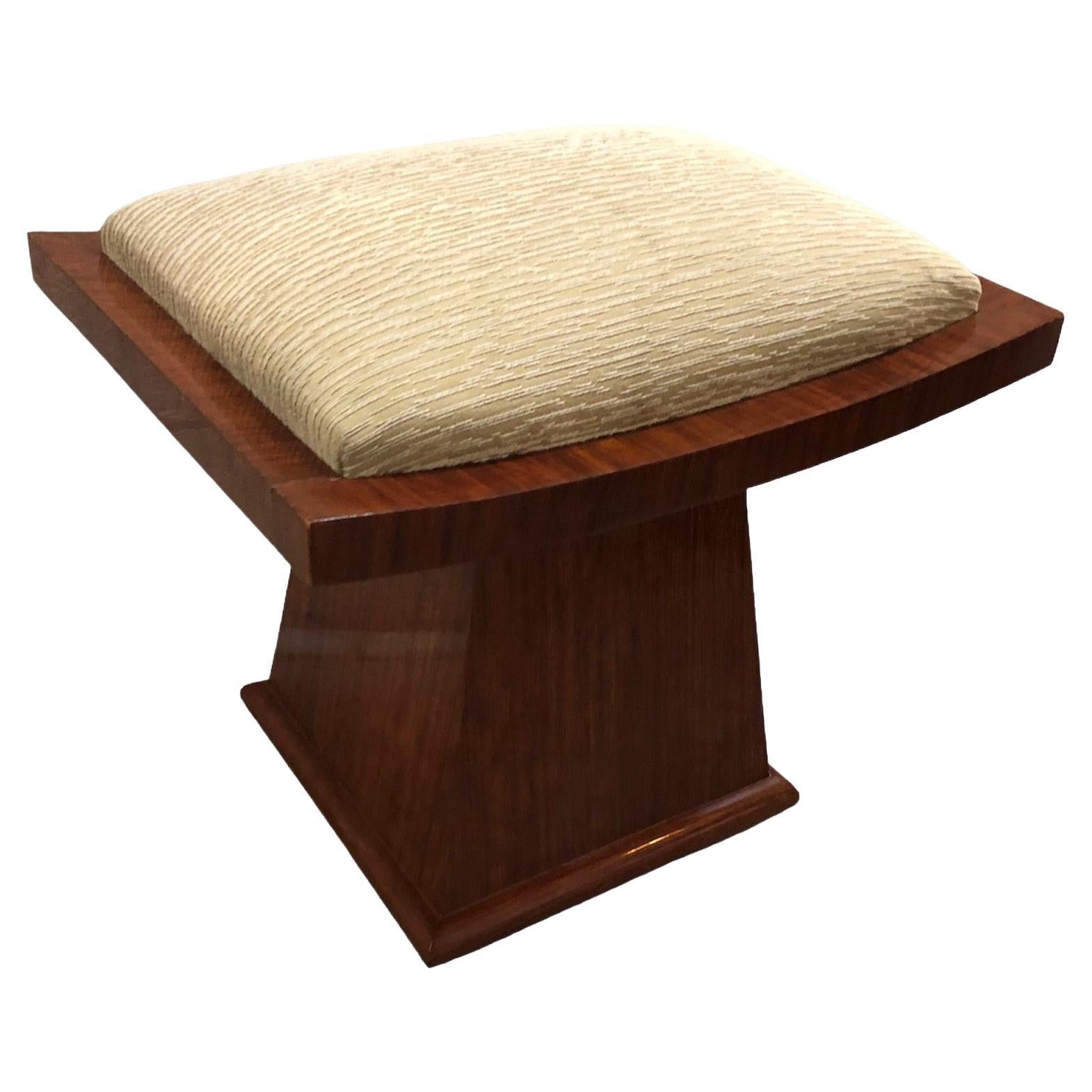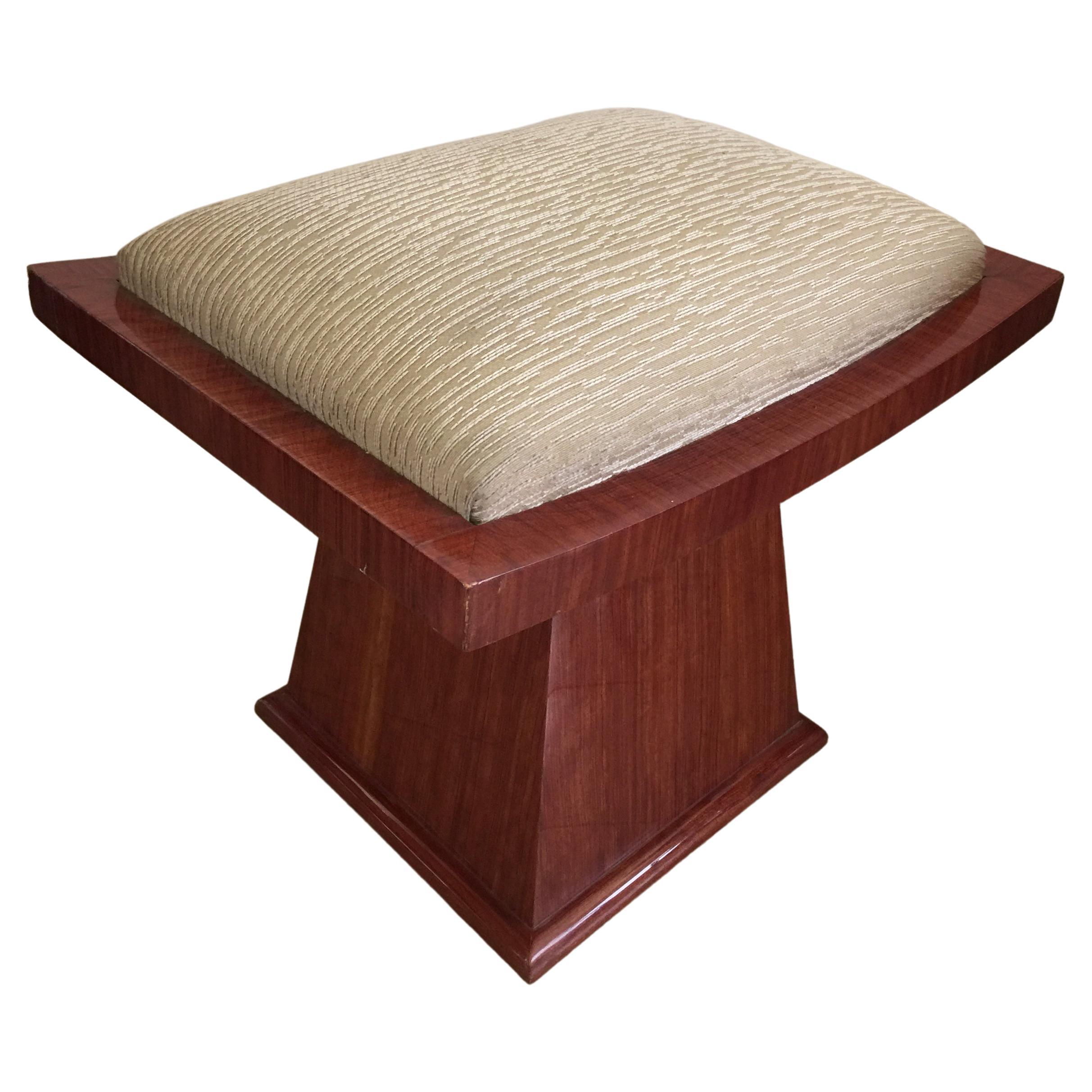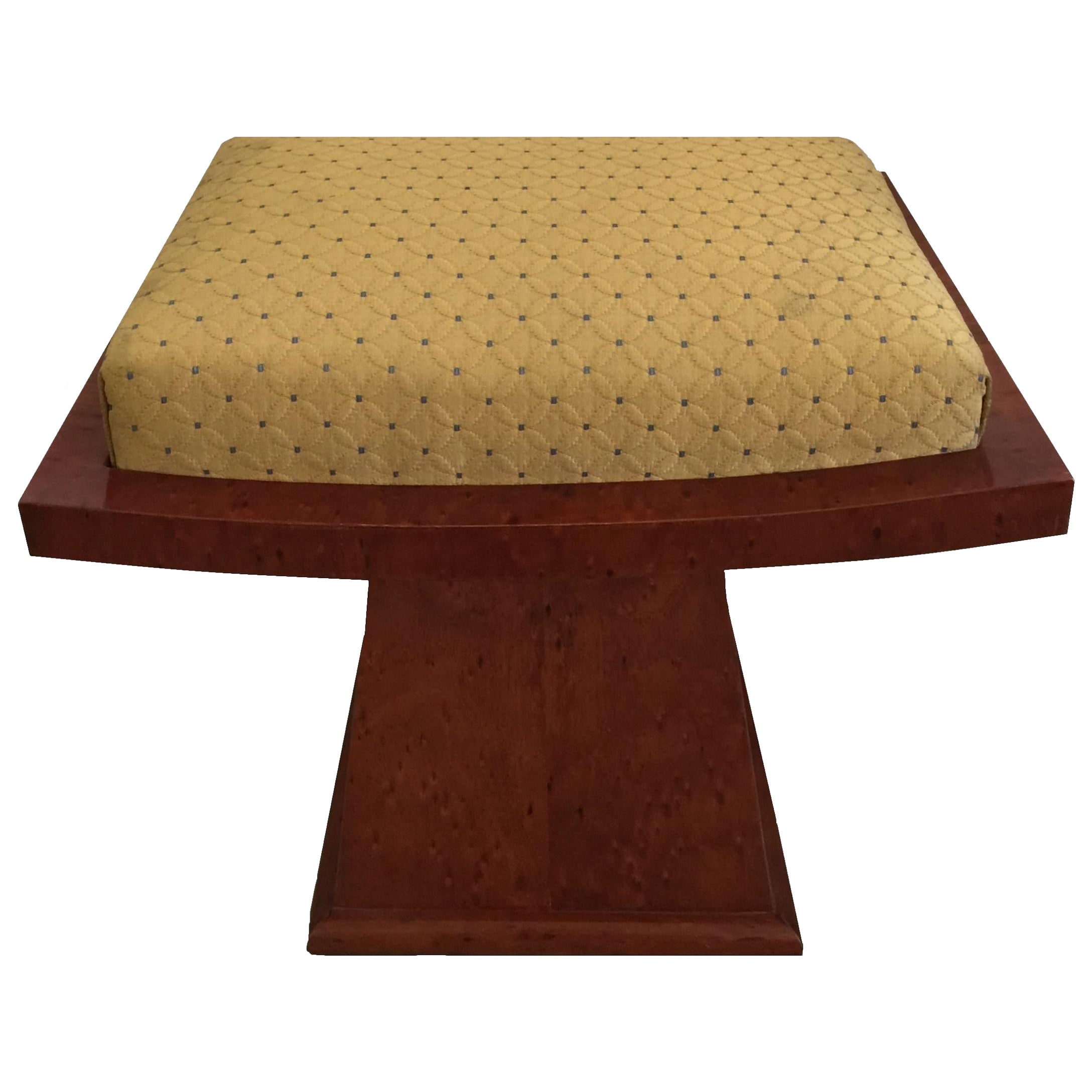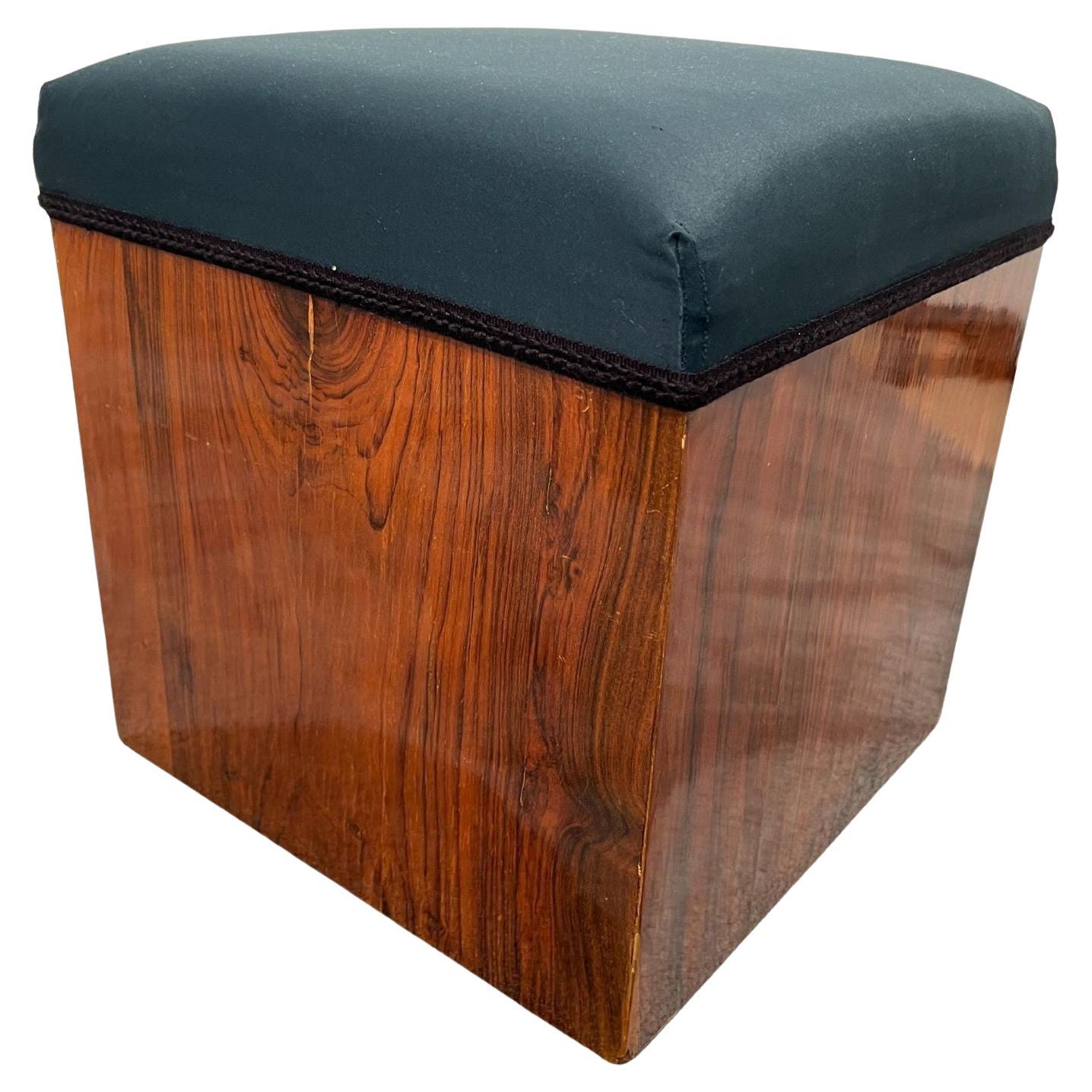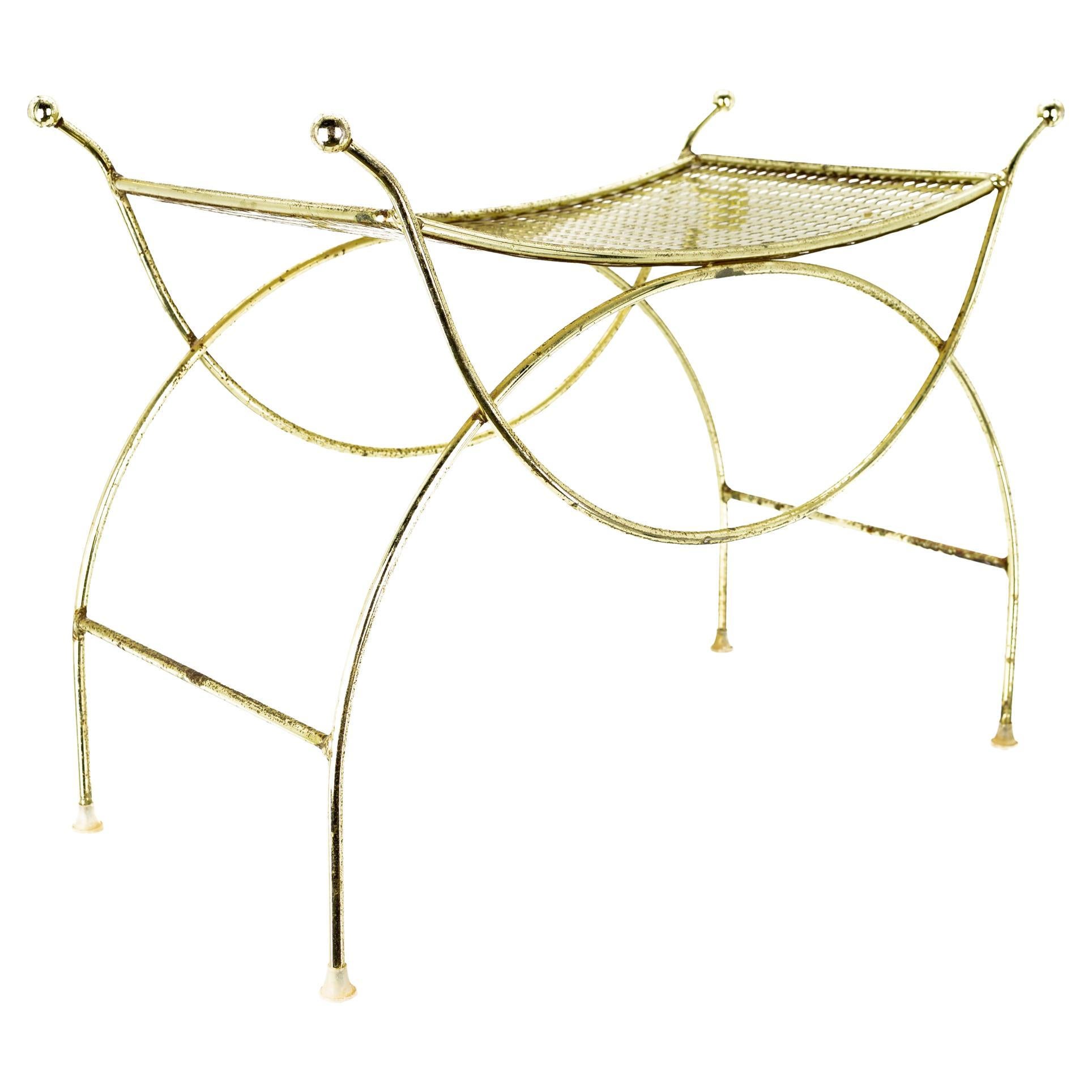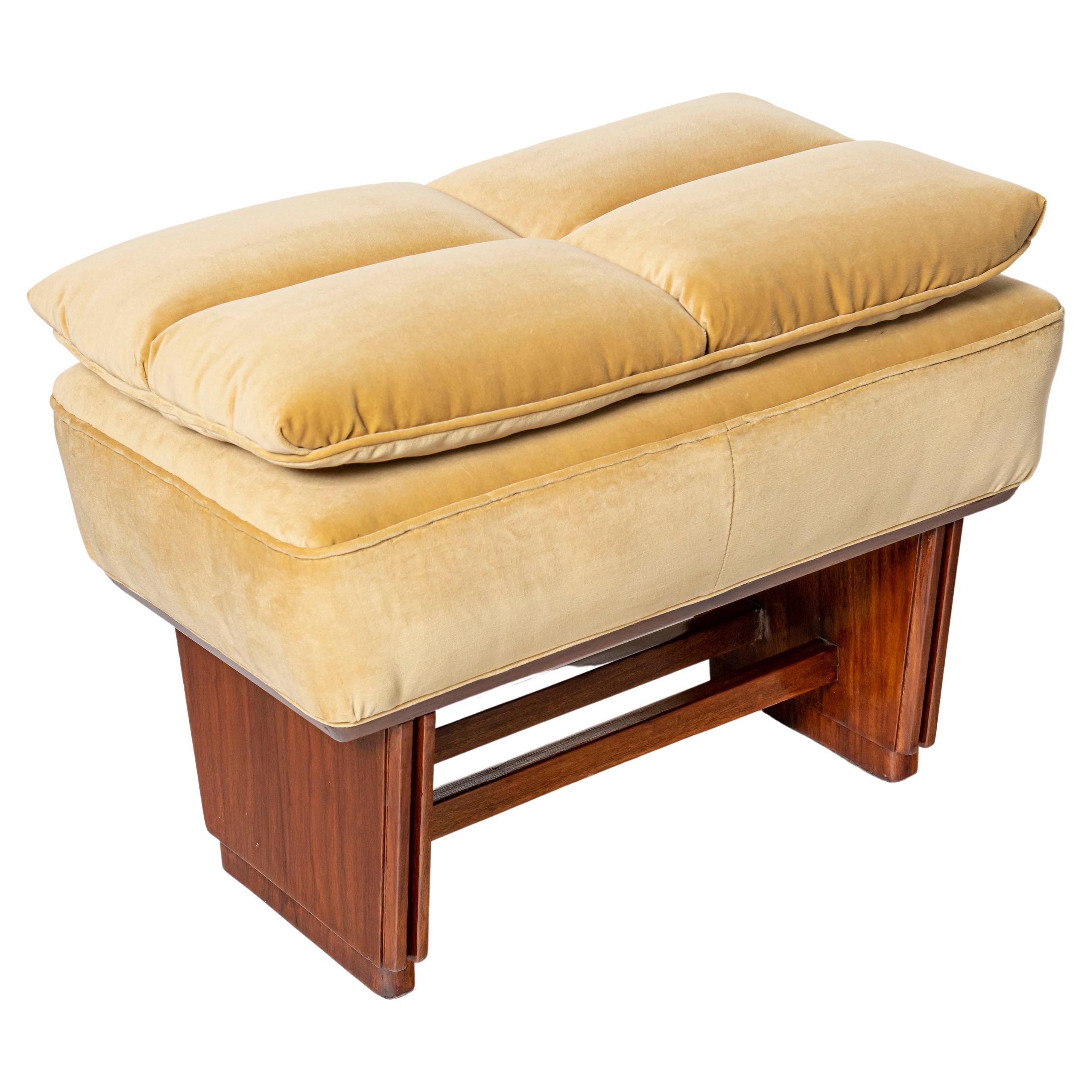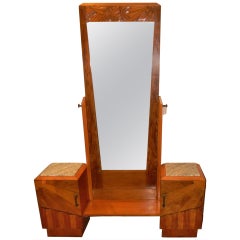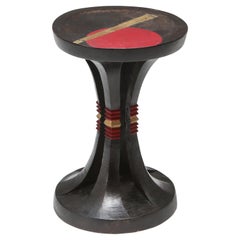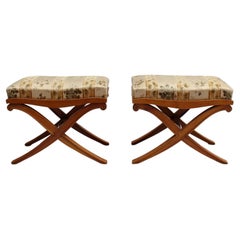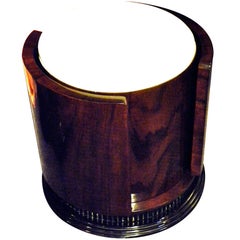
Art Deco Vanity Stool
View Similar Items
Want more images or videos?
Request additional images or videos from the seller
1 of 8
Art Deco Vanity Stool
About the Item
- Dimensions:Height: 20 in (50.8 cm)Diameter: 19 in (48.26 cm)
- Style:Art Deco (In the Style Of)
- Materials and Techniques:
- Place of Origin:
- Period:
- Date of Manufacture:21st Century
- Condition:excellent new.
- Seller Location:Oakland, CA
- Reference Number:Seller: 14081stDibs: U1009048714219
About the Seller
5.0
Platinum Seller
These expertly vetted sellers are 1stDibs' most experienced sellers and are rated highest by our customers.
Established in 1990
1stDibs seller since 2009
348 sales on 1stDibs
Associations
20th Century Specialists
More From This SellerView All
- French Art Deco Carved Wood Vanity & MirrorLocated in Oakland, CAThis is a lovely example of French Art Deco design. This vanity has many special aspects that you can see immediately to identify this as French. Nice carved wood in the mirror, the ...Category
Vintage 1930s French Art Deco Coat Racks and Stands
MaterialsMarble
- Nice Vanity Art Deco Lighting Sconces Streamline ModerneLocated in Oakland, CANice round original frosted tube glass. Chrome backplate and upper/lower supports all connected. Back plate mounts directly to the wall with four screws or bolts. Shown here with sma...Category
Vintage 1930s French Art Deco Wall Lights and Sconces
MaterialsMetal
- Art Deco Macassar Vanity Cabinet French Style of RuhlmannBy Émile-Jacques RuhlmannLocated in Oakland, CAA vanity cabinet in the Ruhlmann style would likely exhibit these characteristics, with a focus on craftsmanship, geometric forms, and luxurious materials such as Macassar ebony. It ...Category
21st Century and Contemporary Art Deco Vanities
MaterialsMirror, Macassar
- Art Deco Vanity Table or Desk After Style of RuhlmannBy Émile-Jacques RuhlmannLocated in Oakland, CAFrench Art Deco Desk In Style of Ruhlmann. Macassar wood was chosen and the “ivorite” plastic details were shaped and inlaid by master craftsmen working to create this timeless classic. A real signature of the Grand Art Deco period. The finish is pure “French” polish with parchment leather inlay as part of the writing surface of the desk. The drawers are all joined in the class French tradition, heavy and meaningful. You’ve probably only ever seen a piece like this in books on Art Deco. This custom piece was made for our shop, the goal was to re-create this famous Ruhlmann desk...Category
21st Century and Contemporary Argentine Art Deco Desks
MaterialsMacassar
- Custom Art Deco Swivel Wood Bar Stool Exotic WoodsLocated in Oakland, CACustom Art Deco swivel wood barstool using exotic woods. Quality materials: French nails used for cream leather upholstery, and subtle contrastin...Category
21st Century and Contemporary Argentine Art Deco Swivel Chairs
MaterialsLeather, Wood
- Art Deco L Shaped Stand Behind Macassar Bar and 3 Bar StoolsLocated in Oakland, CAArt Deco L Shaped Stand Behind Macassar Bar and 3 Bar Stools. Original and restored bar with many extra storage features in the back, multiple shelves, drawers, and space to outfit even the most over-stocked back bar. The L shape of the bar is great with one angled edge and everything is framed with 1/2 round faceted contrasting wood details on both the top and bottom. There are 3 matching bar stools with newly refinished black leather tops. We specialize in this type of home bar with many custom details. This one has that perfect touch of sophistication and charm to turn your home into that HOLLYWOOD glamor moment. As we sit watching the “Thin Man...Category
Vintage 1930s Argentine Art Deco Dry Bars
MaterialsLeather, Wood
You May Also Like
- Art Deco StoolLocated in Antwerp, BEFrench 1940s stool in ebonized wood, with red lacquer and gold leaf Would fit well in an eclectic evocative decor inspired by Kelly Wearstler.Category
Mid-20th Century French Art Deco Stools
MaterialsGold Leaf
$2,200 - Art Deco Stool Ottoman, FootstoolLocated in Vienna, ATWalnut frame with curved legs and new upholstery with Lelievre fabric. Made by an unknown Austrian furniture maker, circa 1930.Category
Vintage 1930s Austrian Art Deco Footstools
MaterialsWalnut, Upholstery
- Pair of Fine French Art Deco X-Form StoolsLocated in Long Island City, NYA pair of fine French 1940s X-form stool in cherry wood.Category
Vintage 1940s French Art Deco Stools
MaterialsWood
$7,500 / set - Art Deco Stool in Wood, Country France, 1930Located in Ciudad Autónoma Buenos Aires, CStools Art Deco. Material: wood You want to live in the golden years, this is the stool that your project needs. We have specialized in the sale of Art Deco and Art Nouveau styles s...Category
Vintage 1930s French Art Deco Stools
MaterialsWood
- Art Deco Stool, Material Iron, Country France, 1930Located in Ciudad Autónoma Buenos Aires, CStools Art Deco. Material: iron You want to live in the golden years, this is the stool that your project needs. We have specialized in the sale of Art Deco and Art Nouveau styles since 1982.If you have any questions we are at your disposal. Pushing the button that reads 'View All From Seller'. And you can see more objects to the style for sale. Why are there so many antiques in Argentina? In the 1880 – 1940 there was a grate wave of immigration encouraged by the periods of war that were taking place. 1st World War took place between 1914 and 1918 2nd World War took place between 1939 and 1945 The immigrants options were New York or Buenos Aires. Tickets were cheap and in Buenos Aires they were welcomed with open arms, as it was a country where everything was still to be done. Argentina was the country of new opportunities, labour was needed and religious freedom was assured, in many cases the of the family travel first until they were settled and then the rest of the family members join them. In the immigrant museum “Ellis Island Immigrant Building” in New York you can se the promotional posters of the boats that would take them to a new life. Between the years 1895 and 1896, Argentina had the highest DGP (gross domestic product) per capita in the world according to the Maddison Historical Statistics index, this situation arose due to the large amount of food being exported to European countries, which were at war. The Argentinean ships left the port of Buenos Aires with food, but they returned with furniture, clothes and construction elements, (it´s common to see this the old buildings of the historic neighbourhood of San Telmo, the beams with the inscription “Made in England)”, as well as many markets that were built in Buenos Aires, such us the San Telmo Market, whose structure was brought by ship and afterwards assembled in 900 Defensa Street. With the great influence of European immigrants living in the country, the children of the upper classes travelled to study in France, resulting in the inauguration of “La Maison Argentinienne”, on 27th of June 1928, in the international city of Paris, which hosted many Argentinians that were studying in Frace. It´s the fourth house to be built after France, Canada and Belgium, being the first Spanish-speaking one. Still in place today (17 Bd Jourdan, 75014, Paris, France). Many of the children of these wealthy families who attended international art exhibitions, museums and art courses abroad, took a keen interest in the European style. This is why Buenos Aires was at the time referred as “The Paris of South America”. Between the years 1890 and 1920 more than a hundred Palaces were built on Alvear Avenue the most exclusive avenue in Buenos Aires. Today some of these palaces have been transformed into museums, hotels and embassies. In the year 1936, the Kavanagh building was inaugurated, it was the tallest reinforced concrete building in South America. During 1994 the American Society of Civil Engineers distinguished it as an “international engineering milestone”, and it´s now considered a World Heritage of Modern Architecture. At the time was common to hire foreign architects such as Le Corbusier, who visited Buenos Aires/Argentina in 1929 and in 1948 he drew up the blueprints for a house built in La Plata City (which was declared a World Heritage Site). In 1947, the Hungarian architect Marcelo Breuer designed “Parador Ariston” in the seaside city of Mar del Plata. After an Argentinean student at Harvard University convinced him to come to Argentina. He worked on an urban development project in the Casa Amarilla, area of La Boca. The Ukrainian architect, Vladimiro Acosta, arrives in Argentina in 1928 and worked as an architect until que moved to Brazil. Antonio Bonet, a Spanish architect who worked with Le Corbusier in Paris, arrives in Argentina in 1937, where he carried out several architectural works and in 1938 designs the well-known BFK chair. Andres Kálnay, of Hungarian origin, made around 120 architectural masterpieces, among which the former Munich brewery stands out, he even made the furniture’s design. The German architect, Walter Gropius, director of the Bauhaus, lived in Argentina, where he wrote articles for “Sur” magazine and founded in Buenos Aires, an architectural firm with Franz Möller, who was also an architect, where he built two houses. At the same time several famous designers decided to immigrate to Argentina, among them we can find the well-known French designer, Jean-Michel Frank, who arrived in the country in 1940 and also worked for the Rockefeller family. Special pieces were made, which were sold exclusively in the country, such as the well-known German company “WMF”, who sold their products by catalogue, which were chosen by the ladies of high society in the list of wedding gifts, as well as the pieces designed by Christofle. The Swiss sculptor Alberto Giacometti, made special pieces for Argentinean mansions. In 1904 the first Jansen branch outside Paris was established in Buenos Aires, as the Argentinean clientele demanded a large amount of furniture, from the end of the 19th century to the mid-20th century. In 1970, the brand Rigolleau Argentina made pieces authorised by Lalique. The brands Maple and Thompson also set up shop in the country. The French plastic artist, Marcel Duchamp moved to Argentina in 1918-1919. Glass signed Gallé, Charder, Leverre, Schneider, Muller and other French firms. They were bought in flower shops and were given to ladies with beautiful floral arrangements. Some furniture manufacturers travelled to international fairs and bough the patterns to produce the furniture in Argentina, such as the furniture firm Englander and Bonta, who bought the patterns ins Italy. It is worth mentioning that in Argentina we have the largest community of Italians outside...Category
Vintage 1930s French Art Deco Stools
MaterialsIron
- Art Deco Stool, Material Wood, Country France, 1930Located in Ciudad Autónoma Buenos Aires, CStools Art Deco. Material: wood You want to live in the golden years, this is the stool that your project needs. We have specialized in the sale of Art Deco and Art Nouveau style...Category
Vintage 1930s French Art Deco Stools
MaterialsWood
Recently Viewed
View AllMore Ways To Browse
South American Leather Footstools
South American Animal Skin Footstools
Art Deco Animal Skin Footstools
Root Wood Stools
Foot Stool Storage
Eames Herman Miller Drafting Stool
Florence Knoll Bar Stools
Fort Standard Chainsaw
Handcrafted Oxidized Counter Stool
Inez Barstool
Invicta Bar Stool
Invicta Stool
John Risley Bar Stool
Lisa Ertel
Olive Green Counter Stools
Opal Bent Stool
Rare Z Stool
Red Metal Step Stool
